|
Pioneer program
The Pioneer programs were two series of United States lunar and planetary space probes exploration. The first program, which ran from 1958 to 1960, unsuccessfully attempted to send spacecraft to orbit the Moon, successfully sent one spacecraft to fly by the Moon, and successfully sent one spacecraft to investigate interplanetary space between the orbits of Earth and Venus. The second program, which ran from 1965 to 1992, sent four spacecraft to measure interplanetary space weather, two to explore Jupiter and Saturn, and two to explore Venus. The two outer planet probes, Pioneer 10 and Pioneer 11, became the first two of five artificial objects to achieve the escape velocity that will allow them to leave the Solar System, and carried a golden plaque each depicting a man and a woman and information about the origin and the creators of the probes, in case any extraterrestrials find them someday. NamingCredit for naming the first probe has been attributed to Stephen A. Saliga, who had been assigned to the Air Force Orientation Group, Wright-Patterson AFB, as chief designer of Air Force exhibits. While he was at a briefing, the spacecraft was described to him, as, a "lunar-orbiting vehicle, with an infrared scanning device." Saliga thought the title too long, and lacked theme for an exhibit design. He suggested, "Pioneer", as the name of the probe, since "the Army had already launched and orbited the Explorer satellite, and their Public Information Office was identifying the Army, as, 'Pioneers in Space,'" and, by adopting the name, the Air Force would "make a 'quantum jump' as to who, really, [were] the 'Pioneers' in space.'"[1] Early missionsThe earliest missions were attempts to achieve Earth's escape velocity, simply to show it was feasible and to study the Moon. This included the first launch by NASA which was formed from the old NACA. These missions were carried out by the Air Force Ballistic Missile Division, Army, and NASA.[2] Able space probes (1958–1960)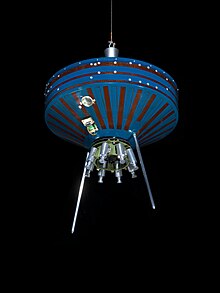 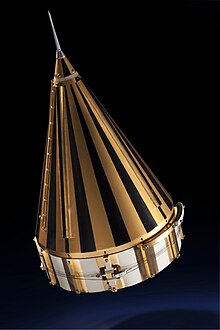 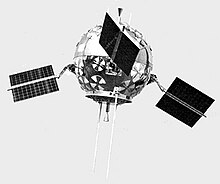
Juno II lunar probes (1958–1959)
Later missions (1965–1978)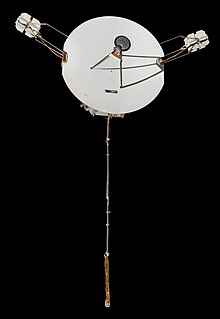 Five years after the early Able space probe missions ended, NASA Ames Research Center used the Pioneer name for a new series of missions, initially aimed at the inner Solar System, before the flyby missions to Jupiter and Saturn. While successful, the missions returned much poorer images than the Voyager program probes would five years later. In 1978, the end of the program saw a return to the inner Solar System, with the Pioneer Venus Orbiter and Multiprobe, this time using orbital insertion rather than flyby missions. The new missions were numbered beginning with Pioneer 6 (alternate names in parentheses). Interplanetary weatherThe spacecraft in Pioneer missions 6, 7, 8, and 9 comprised a new interplanetary space weather network:
Pioneer 6 and Pioneer 9 are in solar orbits with 0.8 AU distance to the Sun. Their orbital periods are therefore slightly shorter than Earth's. Pioneer 7 and Pioneer 8 are in solar orbits with 1.1 AU distance to the Sun. Their orbital periods are therefore slightly longer than Earth's. Since the probes' orbital periods differ from that of the Earth, from time to time, they face a side of the Sun that cannot be seen from Earth. The probes can sense parts of the Sun several days before the Sun's rotation reveals it to ground-based Earth orbiting observatories. Outer Solar System missions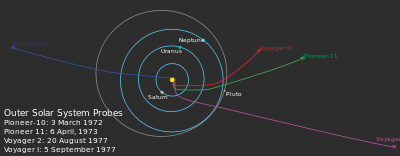 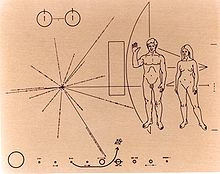
Venus project
See also
References
External linksWikimedia Commons has media related to Pioneer program.
|
|||||||||||||||||||||||||||||||||||||||||||||||||||||||||||||||||||||||||||||


